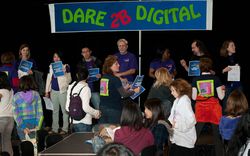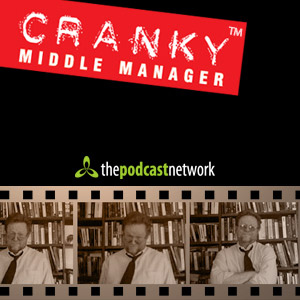Inspired by the Toyota Production System, Mary and Tom Poppendieck describe the seven wastes of software development as: partially done work, extra features, relearning, handoffs, delays, task switching, and defects. In this video from the February Scrum Professionals MeetUp, Kim Poremski explores the seven wastes and introduces tools and techniques to overcome the seven wastes and unlock organizational agility and scalability.
Category Archives: presentations
Agile in Context
“It is not the strongest of the species that survives, nor the most intelligent that survives. It is the one that is most adaptable to change.”
— Charles Darwin
Just about everyone agrees that being “adaptable to change” is important.
At the same time, many people believe that we’re entering an age of acceleration. The models underlying society at every level are being redefined as traditional linear models of change give way to the explosive power of exponential growth. According to computer scientist, inventor and futurist Ray Kurzweil:
“The 21st century will be equivalent to 20,000 years of progress at today’s rate of progress; organizations have to be able to redefine themselves at a faster and faster pace.”
At all levels of engineering, we need a management methodology that is “most adaptable to change.”
Is “Agile” the answer? When we ask people to voice their opinions, doubts emerge around the concept of “agile methodologies.” Is it a new buzzword, yet another management fad or a new paradigm for surviving and thriving in times of rapid change? Or is there something better on the horizon?
Join Cathy Simpson of Agile Learning Labs to explore these questions at the next IEEE Technology and Engineering Management Society meeting on April 2, 2015. In this talk, we will look for the “core of agile” that will endure beyond the fad. We will address agile in context. Everything that is old is new again; and perhaps we will discover together that we’ve been agile all along. We just didn’t have the context to know it.
What Does Your Team Need? Girl Power!

By Hillary Johnson
Last weekend, Chris and I attended a marvelous event called Dare 2B Digital, aimed at addressing the gender gap in computer science careers, and at which 7th through 10th grade girls got to play at writing code, crafting business plans, and other techie things.
Chris is on the Cranky Middle Manager Show talking about Agile
 If you want to hear Chris explain agile in layman's terms, have a listen to this episode of the Cranky Middle Manger Show, where Chris is the featured guest. The show is hosted by our friend, Wayne Turmel, who is jovially cranky in a way that only a stand-up comic-turned-management trainer can be.
If you want to hear Chris explain agile in layman's terms, have a listen to this episode of the Cranky Middle Manger Show, where Chris is the featured guest. The show is hosted by our friend, Wayne Turmel, who is jovially cranky in a way that only a stand-up comic-turned-management trainer can be.
Read the full article…
Presentation Tips and Tricks
At the April meeting of the Bay Area Engineering Managers Support Group, I did a presentation on doing presentations. Here are the slides. You might also want to check out these past posts about presenting.
Cheers,
Long Live Lucky Oliver

On Wednesday, I’m doing a presentation on doing presentations. One of the little gems that I was looking forward to passing on was Lucky Oliver. It has been my favorite source for images for presentations and the web. The quality and variety of the images has been consistently great, and the prices were more than affordable. Today I discovered that Lucky Oliver will be closing down on May 15th. I’m sad to be losing this source for great photos, and sad to see the business fail. Best of luck to Bryan, and everyone else at Lucky Oliver.
Now where am I going to get my images? Any suggestions?
Cheers,
Technical Management Events and Such
Greetings!
I’m back home, in the San Francisco Bay Area, after a couple of weeks on the road. I went to Chicago for the Scrum Gathering, where I presented Agile 101, and What Makes Agile Projects Succeed (or Fail)? I also facilitated a couple of open space sessions. Notes from one of those, Let’s Practice Agile Estimation, can be found here on the Agile Alliance Wiki.
Gettysburg Slides
For those of you who couldn’t be there, here are Abe‘s Powerpoint slides.
Joel on Software… Demos
Joel has a good post on doing software demos. High points include:
- Tell stories!
- ‘Accidentally’ bump into all the nice little “fit and finish” features of your product
If you really want to get serious about doing a great sales demo, check out Peter Cohan.
Presentation Time
Managers, as well as engineers, are occasionally called on to give presentations. Preparation and practice are the biggest ingredients in a successful presentation. You don’t want the big day to be the first time you’ve given the presentation. Practice out loud, first by yourself and then in front of some friends or colleagues who can give you constructive criticism. Practice with the actual equipment that you will be using, preferably in the actual room where you will give the final presentation. The more you rehearse, the lower the chances of something going wrong. Sometimes, things still go wrong. John West tells the story of one such occasion, and how he did a respectable job recovering, in this post to Leading from the Trenches.
